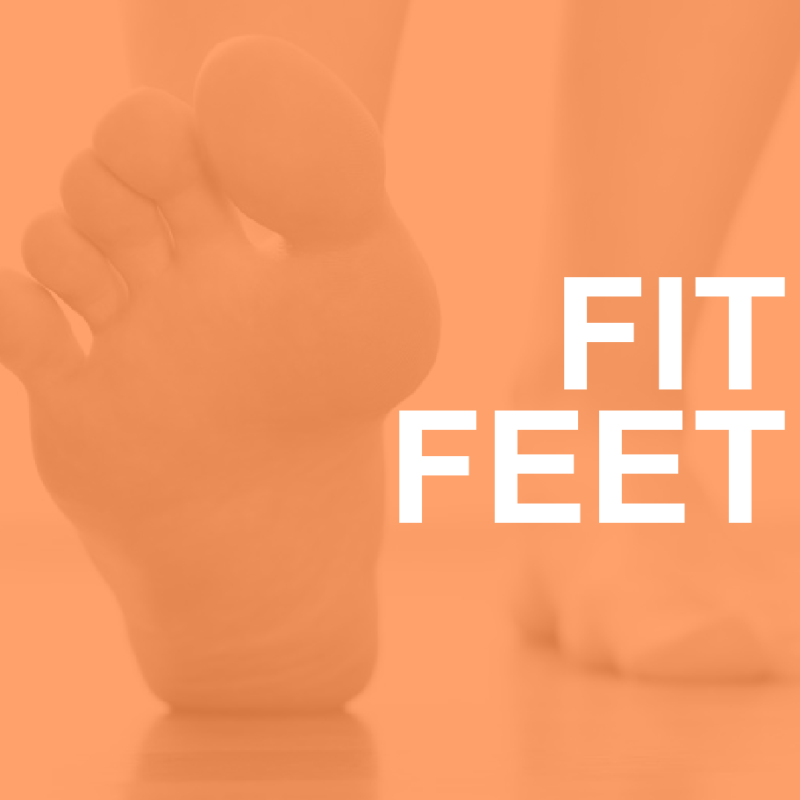
Our two feet are, by definition, the terminals of our legs. As much of our quality of life depends on mobility, proactive foot care and “shank’s mare” (one’s own legs!) fitness is a trainer’s prime consideration to ensure fit feet for their clients. Many of us had, have, or will experience foot pain or issues, such as plantar fasciitis and ankle instability, which often leads to sprains.

Foot Anatomy
Each human foot is comprised of twenty-six bones (not including the bones of the ankle and lower leg):
- 14 phalanges in toes
- 5 mid-foot metatarsals
- 7 bones at the rear/heel of a foot – including the foot’s largest – the calcaneus
Add thirty-three joints, 107 ligaments, and 19 muscles and a trainer can appreciate why a client may develop foot problems.
Closed Case
Weighty Matter!
Sound Footing for Older Clients
Beyond bodyweight’s impact, foot fitness in older clients may also deteriorate due to:
- Toenail thickness or brittleness – mandating careful pedicures
- Development of bunions (exacerbated by ill-fitting shoes) which alters kinetic chain functioning, leading to potential injuries or to trips and falls
- A shorter gait or stride and/or limited ranges of motion [ROM]. Alternate shoes or prosthetics might be considered or needed for activities
- Swollen feet with a possible need for lymphedema massages or compression anklets/stockings
- Fungal infections, like athlete’s foot, may be painful, and potentially suggest a compromised immune system. Note: If fungal infections are severe, topical ointments may not address the internal immuno-deficiency.
Priority Emphases
Professional trainers should be aware of the client’s limits to ankle and foot ROM (with age and gender dependence); arch discomfort, or pain; 3. persistent ankle swelling.
Trainers should also be aware of certain medical or physical conditions that are manifested in a client’s ankles, arches, and toes. Trauma or surgery can further limit foot fitness, as described in a prior NFPT post.
- Diabetes. At least half of clients with diabetes experience foot neuropathy or pain and numbness. A trainer should encourage clients with diabetes to monitor for foot infections!
- Our nation’s CDC offers a good checklist for keeping feet healthy, whether the client is diabetic or not.
- Stress Fractures. Our foot bones often experience microfractures that heal on their own. Yet long-lasting “stress” fractures may result when loads or excessive motions are applied. As motion may heighten discomfort or pain, a trainer will need to adapt or modify certain closed chain exercises if the client has a stress fracture.
- Arthritis. This broad family of joint inflammations can definitely impact a client’s foot or feet. If a client mentions symptoms like tenderness, pain, swelling, or stiffness, arthritis may be a root cause. Exercise modifications and pre/post-exercise therapy may be warranted.
Terminal Success
Our feet and ankles experience significant loading and extensive motions in all three body planes. We may take those leg “terminals” for granted until trauma or a condition develops which can impact physical training in many closed chain exercises.
Proactive massaging and therapeutic rotations of feet can help many clients extend their foot fitness. Addressing postural dysfunction and safely incorporating barefoot training would benefit most clients, but elder clients or diabetic clients should obtain provider clearance first. Some clients may appreciate healthy feet checklists. Clients should invest the time and resources to purchase properly fitted shoes to help them on their fitness journeys.
Reference
- D’Lima DD, Fregly BJ, Patil S, Steklov N, Colwell CW. Knee joint forces: prediction, measurement, and significance. Proceedings of the Institution of Mechanical Engineers Part H, Journal of Engineering in Medicine. 2012;226(2):95-102.






